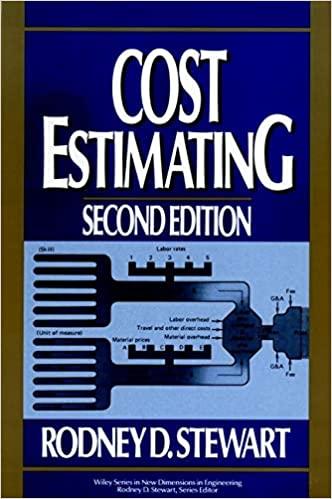Question
Fundamental Accounting practice questions Maxwell and Smart are forming a partnership. Maxwell is investing a building that has a market value of $92,000. However, the
Fundamental Accounting practice questions
| Maxwell and Smart are forming a partnership. Maxwell is investing a building that has a market value of $92,000. However, the building carries a $44,000 mortgage that will be assumed by the partnership. Smart is investing $45,000 cash. The balance of Maxwell's Capital account will be: |
$93,000.
$92,000.
$47,000.
$44,000.
$48,000
| Peters, Chong, and Aaron are dissolving their partnership. Their partnership agreement allocates each partner an equal share of all income and losses. The current period's ending capital account balances are Peters, $84,000; Chong, $72,000; and Aaron, $(21,000). After all assets are sold and liabilities are paid, there is $135,000 in cash to be distributed. Aaron is unable to pay the deficiency. The journal entry to record the distribution should be: |
Debit Cash $135,000, debit Aaron, Capital $21,000, credit Peters, Capital $84,000, credit Chong, Capital $72,000.
Debit Cash $135,000; credit Peters, Capital $45,000; credit Chong, Capital $45,000.
Debit Peters, Capital $84,000; debit Chong, Capital $51,000; credit Cash $135,000.
Debit Peters, Capital $84,000; debit Chong, Capital $72,000; credit Cash $156,000.
Debit Peters, Capital $73,500; debit Chong, Capital $61,500; credit Cash $135,000.
3. Wallace and Simpson formed a partnership with Wallace contributing $92,000 and Simpson contributing $72,000. Their partnership agreement calls for the income (loss) division to be based on the ratio of capital investments. The partnership had income of $205,000 for its first year of operation. When the Income Summary is closed, the journal entry to allocate partner income is:
Debit Income Summary $205,000; credit Wallace, Capital $102,500; credit Simpson, Capital $102,500.
Debit Wallace, Capital $102,500; debit Simpson, Capital $102,500; credit Income Summary $205,000.
Debit Income Summary $205,000; credit Wallace, Capital $115,000; credit Simpson, Capital $90,000.
Debit Cash $205,000; credit Wallace, Capital $115,000; credit Simpson, Capital $90,000.
Debit Wallace, Capital $115,000; debit Simpson, Capital $92,000; credit Cash $205,000.
| Peters and Chong are partners and share equally in income or loss. Peters' current capital balance is $310,000 and Chong's is $300,000. Peters and Chong agree to accept Aaron with a 30% interest in the partnership. Aaron invests $278,000 in the partnership. The amount credited to Aaron's capital account is: |
$176,400.
$588,000.
$288,000.
$266,400.
$278,000.
5. Bloom and Plant organize a partnership on January 1. Bloom's initial investment consists of $350 cash, $1,400 equipment and a $700 note payable reflecting a bank loan for the new business. Plant's initial investment is cash of $1,050. These amounts are the values agreed on by both partners. The journal entry to record Bloom's investment is:
Debit Cash $350; debit Equipment $1,400; credit Note Payable $700; credit Bloom, Capital $1,050.
Debit Cash $1,050; credit Bloom, Capital $1,050.
Debit Cash $350; debit Equipment $1,400; credit Bloom, Capital $2,300.
Debit Cash $350; debit Equipment $700; credit Bloom, Capital $1,050.
Debit Bloom, Capital $2,450; credit Common Stock $2,450.
| Fontaine and Monroe are forming a partnership. Fontaine invests a building that has a market value of $336,000; the partnership assumes responsibility for a $118,000 note secured by a mortgage on the property. Monroe invests $93,000 in cash and equipment that has a market value of $68,000. For the partnership, the amounts recorded for the building and for Fontaine's Capital account are: |
Building $218,000; Fontaine, Capital $218,000.
Building $218,000; Fontaine, Capital $118,000.
Building $336,000; Fontaine, Capital $218,000.
Building $336,000; Fontaine, Capital $336,000.
Building $336,000; Fontaine, Capital $279,000.
| Wheadon, Davis, and Singer formed a partnership with Wheadon contributing $66,000, Davis contributing $55,000 and Singer contributing $44,000. Their partnership agreement called for the income (loss) division to be based on the ratio of capital investments. If the partnership had income of $90,000 for its first year of operation, what amount of income (rounded to the nearest thousand) would be credited to Singer's capital account? |
$24,000.
$90,000.
$30,000.
$36,000.
$44,000.
Top of Form
| Mace and Bowen are partners and share equally in income or loss. Mace's current capital balance is $138,000 and Bowen's is $122,500. Mace and Bowen agree to accept Kent with a 30% interest in the partnership. Kent invests $118,000 in the partnership. The balances in Mace's and Bowen's capital accounts after admission of the new partner equal: |
Mace $142,450; Bowen $122,500.
Mace $138,000; Bowen $126,950.
Mace $135,775; Bowen $120,275.
Mace $140,225; Bowen $124,725.
Mace $138,000; Bowen $122,500.
|
Design Services is organized as a limited partnership, with Miko Toori as one of its partners. Miko's capital account began the year with a balance of $46,200. During the year, Miko's share of the partnership income was $8,700, and Miko received $5,200 in distributions from the partnership. What is Miko's partner return on equity? |
18.1%
11.3%
10.8%
17.5%
18.8%
10. Wallace and Simpson formed a partnership with Wallace contributing $86,000 and Simpson contributing $66,000. Their partnership agreement calls for the income (loss) division to be based on the ratio of capital investments. Wallace sold one-half of his partnership interest to Prince for $73,000 when his capital balance was $96,000. The partnership would record the admission of Prince into the partnership as:
Debit Wallace, Capital $73,000; credit Prince, Capital $73,000.
Debit Wallace, Capital $48,000; credit Prince, Capital $48,000.
Debit Prince, Capital $73,000; credit Wallace, Capital $73,000.
Debit Wallace, Capital $43,000; credit Prince, Capital $43,000.
Debit Wallace, Capital $48,000; debit Cash $25,000; credit Prince, Capital $73,000.
Bottom of Form
Step by Step Solution
There are 3 Steps involved in it
Step: 1

Get Instant Access to Expert-Tailored Solutions
See step-by-step solutions with expert insights and AI powered tools for academic success
Step: 2

Step: 3

Ace Your Homework with AI
Get the answers you need in no time with our AI-driven, step-by-step assistance
Get Started


